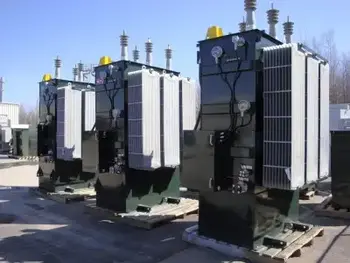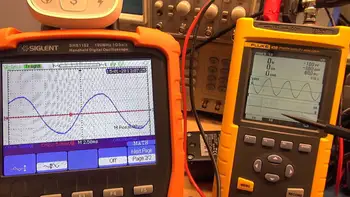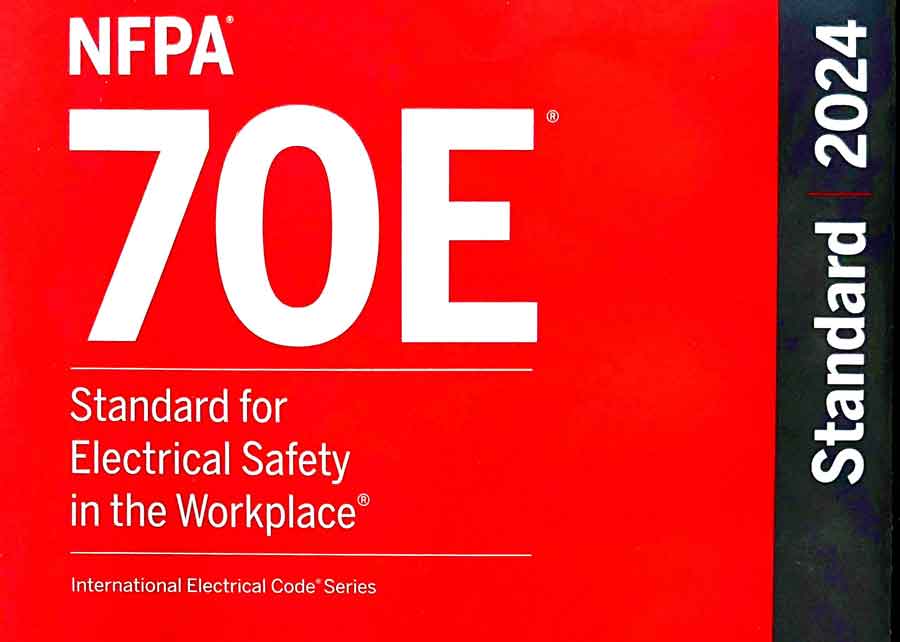Transformer Grounding Explained

Power Quality Analysis Training
Our customized live online or in‑person group training can be delivered to your staff at your location.

- Live Online
- 12 hours Instructor-led
- Group Training Available
Download Our OSHA FS3529 Fact Sheet – Lockout/Tagout Safety Procedures

- Learn how to disable machines and isolate energy sources safely
- Follow OSHA guidelines for developing energy control programs
- Protect workers with proper lockout devices and annual inspections
Transformer grounding ensures electrical safety, stabilizes voltage, and protects equipment from fault currents. It supports system reliability, reduces shock hazards, and meets code compliance in substations, distribution networks, and industrial facilities.
What is Transformer Grounding?
Transformer grounding is the practice of connecting a transformer’s neutral or core to earth to ensure safe operation and system stability.
✅ Enhances fault current protection and personnel safety
✅ Stabilizes voltage during abnormal conditions
✅ Ensures compliance with electrical codes and standards
The Importance of Transformer Grounding
Grounding is fundamental to the safe and stable operation of electrical systems. By connecting a transformer’s neutral or metallic parts to earth, it:
-
Prevents electric shocks by keeping exposed components at earth potential.
-
Provides a defined fault current path, allowing protective devices to quickly isolate problems.
-
Stabilizes voltage during both normal operation and fault conditions, especially in high-voltage networks.
-
Protects equipment and system reliability by reducing the risk of damage or outages.
Without effective earthing, transformers and connected systems are exposed to instability, equipment failure, and safety hazards. Effective transformer earthing plays a central role in overall power quality, ensuring system stability and minimizing electrical disturbances.
In transformer installations, proper equipment grounding, combined with bonding jumpers, ensures that all carrying metal parts are safely interconnected. This creates a continuous and effective ground fault current path, allowing fault currents to be quickly cleared by protective devices. A correctly sized grounding conductor establishes the primary return path for fault current. In a separately derived system, additional earthing measures are required to maintain safety and compliance.
Purpose of Grounding a Transformer
The main objectives of earthing can be summarized as safety, fault protection, and system stability. By ensuring that the metallic parts of a transformer are at the same potential as the earth, grounding prevents electric shocks. It also provides a low-resistance path for fault currents, allowing protective devices to quickly isolate the problem. Finally, earthing stabilizes voltage levels across the system, which is especially critical in high-voltage networks. A solid understanding of electrical grounding is essential for applying proper transformer earthing methods.
FREE EF Electrical Training Catalog
Download our FREE Electrical Training Catalog and explore a full range of expert-led electrical training courses.

- Live online and in-person courses available
- Real-time instruction with Q&A from industry experts
- Flexible scheduling for your convenience
What are the Different Methods of Earthing a Transformer?
Several methods are used to ground transformers, each with specific applications and benefits:
-
Solidly Grounded: The neutral point of the transformer is directly connected to the ground, providing a low impedance path for fault currents.
-
Resistance: A resistor is inserted between the neutral point and ground, limiting fault currents to safe levels.
-
Reactance: A reactor is used instead of a resistor to limit fault currents, which can be useful in systems with high fault levels.
-
Ungrounded Systems: No intentional connection to ground is made, allowing for continued operation under a single line-to-ground fault condition; however, careful monitoring is required.
Each method balances safety, fault current management, and operational continuity, with the choice depending on the design and purpose of the electrical system. Proper earthing is closely related to grounding and bonding, which work together to prevent electrical hazards.
Impact on System Protection and Fault Management
Grounding has a direct influence on how faults are detected and managed. A properly grounded transformer channels fault currents through a defined path, enabling protective devices such as circuit breakers to quickly trip and isolate the problem. This prevents cascading failures, minimizes downtime, and reduces the risk of fire or electric shock.
What are the Common Standards and Regulations?
Compliance with established standards ensures safe and consistent earthing practices:
-
National Electrical Code (NEC): Governs earthing requirements for equipment and conductors in North America.
-
IEEE Standards: Provide detailed guidelines for transformer earthing in different applications.
-
IEC Standards: Define international methods and safety requirements for earthing electrical systems.
Compliance with the electrical grounding code ensures that transformer earthing installations meet NEC and CSA standards.
What are the Potential Issues and Challenges?
Although earthing is crucial for safety and stability, it presents its own challenges. Certain conditions can reduce effectiveness or compromise system performance:
-
Ground loops – Unintended multiple ground paths can introduce circulating currents, creating noise, signal interference, and even equipment malfunctions.
-
Impedance problems – If the ground path has improper impedance, fault currents may not flow as intended, limiting the operation of protective devices.
-
Ongoing maintenance – Grounding systems must be regularly inspected, tested, and maintained to ensure long-term reliability and compliance with safety standards
The grounding electrode conductor provides the critical low-impedance path needed to safely direct fault currents to earth.
Consequences of Improper Grounding
Improper or insufficient earthing can have serious consequences for both safety and system performance. Without a reliable earth connection, fault currents may not be directed away from equipment, creating dangerous conditions and operational instability. Key risks include:
-
Safety hazards – Increased potential for electric shock, arc faults, and fire.
-
Equipment damage – Fault currents can overheat or destroy electrical components when not safely diverted to ground.
-
Operational instability – Unstable voltage levels may cause outages, power quality issues, and unreliable system performance.
Proper transformer earthing is therefore not optional—it is a fundamental requirement for protecting people, equipment, and the power grid itself. A well-designed grounding system supports both equipment protection and reliable transformer performance.
Best Practices for Effective Grounding
Proper earthing is vital for safe and reliable transformer operation. Following established practices ensures that fault currents are managed effectively and systems remain stable:
-
Identify the neutral point – Connect the transformer’s neutral to ground to establish a defined reference.
-
Use appropriate conductors – Select conductors of adequate size and material to safely carry fault currents.
-
Ensure a clear path – Keep ground paths direct and low in impedance to allow fault currents to flow freely.
-
Follow standards – Adhere to NEC, IEEE, and IEC requirements to ensure compliance, safety, and long-term reliability.
Transformer Ground Faults
A ground fault occurs when an unintended connection forms between a transformer winding and the ground. Causes include insulation failure, physical damage, or poor installation. Such faults can severely damage equipment and endanger personnel, making effective earthing and protective systems absolutely essential.
Electricity Today T&D Magazine Subscribe for FREE

- Timely insights from industry experts
- Practical solutions T&D engineers
- Free access to every issue
Transformer grounding is not just a technical requirement but a cornerstone of power system safety and reliability. By understanding its purpose, applying the appropriate methods, and adhering to recognized standards, engineers can minimize risks, prevent equipment failures, and safeguard personnel. Effective earthing and bonding transform transformers from potential hazards into secure, stable, and dependable components of the electrical grid. For a deeper foundation, our guide on understanding electrical grounding explains the core principles that make transformer earthing effective.
Related Articles







